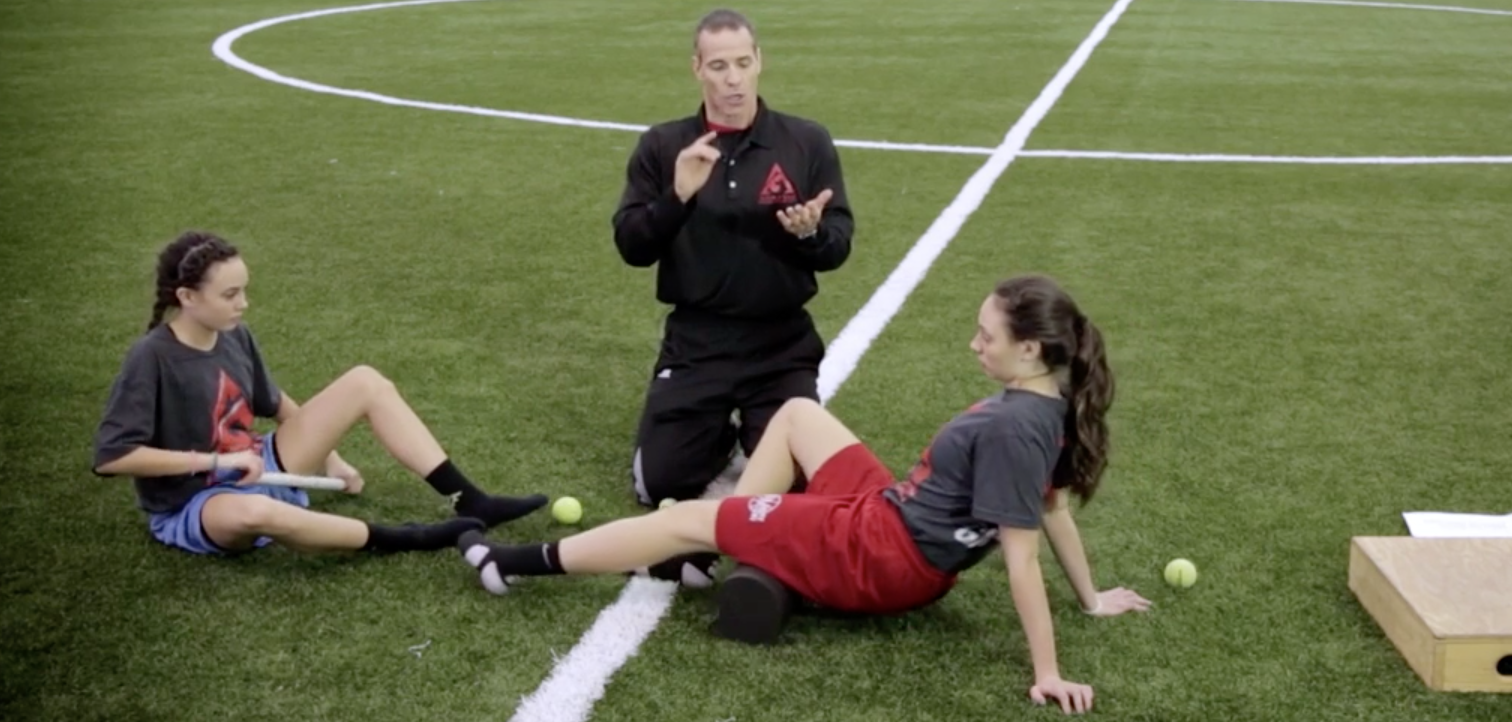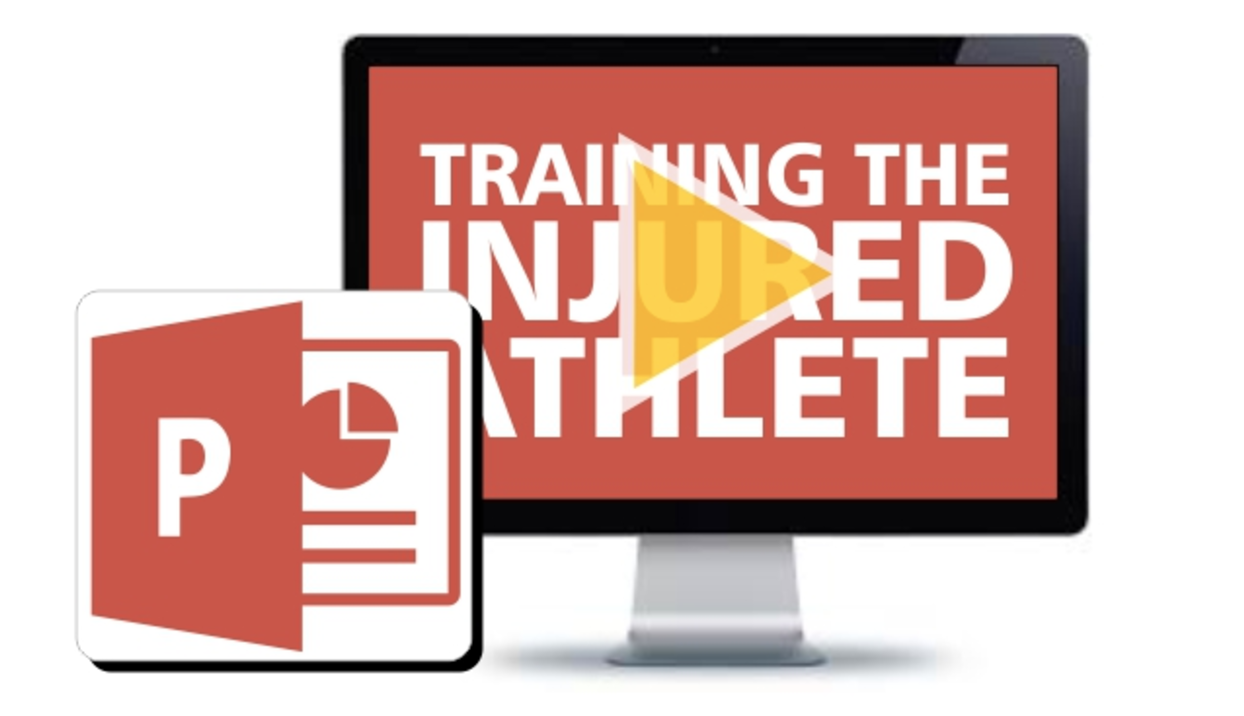Get Rid of Stubborn Hamstring Injuries!

Hamstring injuries are common among all athletes, especially athletes speed training. Learn how to heal your injured hamstring with a close look at a sample rehab program and tips on how to prevent these injuries in the future!
Hamstring injuries are a common problem that are, for the most part, avoidable. Like many other injuries, hamstring problems are not 100% preventable, but there are many ways to help reduce the occurrence for your athletes. If hamstring pulls do take place, guidelines for treatment have been added at the end but this does not mean your athletes should seek medical help. A physician should always be consulted first.
Common causes of hamstring knots, strains and tears come from mineral imbalances, muscle imbalances, dehydration, biomechanics problem and over-training. So, right away nutrition comes into play. Eating a proper diet and getting the adequate amount of water each day can reduce the onset of muscular problems. Muscle imbalances (quad/hamstring ratio) are normally what is said to be the biggest problem leading up hamstring injuries, but from experience, this doesn't seem to be the case. With a properly designed program, I have not seen these strength deficits that will lead to hamstring pulls.
Biomechanical issues are a huge reason for hamstring problems. Athletes that seem to break at the hips (anterior pelvic tilt) when they run are going to be prone to hamstring problems. This problem affects hamstring length since the hamstring is attached to the hip and if the hip is anteriorly tilted or rolled forward, the hamstring is going to be in a lengthened position. Now, as the hamstring is needed to be able to handle a rapid and forceful stretch generated by ground contact while the hamstring is also trying to extend the hip, the hamstring that is already in a lengthened position is needed to be able to handle a great deal of tension beyond what is it normally should handle can lead to some serious problems.
An anterior pelvic tilt also changes where their foot contact is in relation to their center of mass (COM). Poor ground contact position out in front of the COM also puts the hamstring at risk for problems. If the athlete's foot is striking done out in front of the COM, this causes a breaking force that will not only slow the athlete down, but create tremendous force on the hamstring. Striking out in front of the COM mass also means that the foot is plantar flexed (toe pointed out). If the toe is pointed, the hamstring works as a knee flexor during recovery and inhibits the swing phase, which causes hamstring fatigue. By keeping the toe up, it reduces hamstring fatigue by using the gastrocnemius as a knee flexor. So, if the toe is pointed and striking way out in front of the COM, the hamstring is getting fatigued earlier and a shearing force is being created on the hamstring during every step.
Over-training is also a common reason for hamstring related problems. For programs that either have too many speed days in a row or are constantly mixing energy systems, they aren't allowing their athletes an adequate amount of recovery time. This can also be seen in programs that have a speed day on one day and on their "recovery" day, they do their heavy CNS lifts. Also watch out for introducing too much volume on recovery days because the body will still be in a fatigued state the following day and if this is a speed day (or heavy CNS day) muscle pulls will be more likely to occur. If an athlete is not well rested and you want those power athletes to create all of this force with their muscles already tired then you are asking for injuries. Proper recovery is the most important aspect of training.
Treatment (again this isn't suppose to replace the guidance from a physician):
Massage
Light stretching (if a knot or if it doesn't aggravate the hamstring)
RICE – Rest, Ice (20 minutes on and off), Compression, Elevation
Ice compress is used to stop the internal bleeding immediately following injury
Do not heat right after hamstring pull – promotes bleeding to the injury site
Do not use aspirin after immediately after injury (promotes additional bleeding to the affected area)
EMS can be used above the injury site to promote blood flow
The day after the injury, one legged work can begin. One leg march and skipping of the uninjured leg are used. Also other exercises can be used as long as the hamstring isn't being actively engaged. After 3 days of total rest, depending on the rate of recovery of a mild strain, we begin to use both legs. Both legs are used for marching, and in the A series (march and skip) for short distances. Speed work is also slowly introduced. Gerard Mach has had success using 10×10 meters to start. Then depending on the recovery time, you can increase the volume and the distance (at 5 meters at a time). The hamstring won't act up until you really open up your stride so do not increase the distance too quickly.
Using this active recovery process instead of just resting completely is used to help alleviate the buildup of scar tissue and the limited accelerations help to maintain and maximize speed without putting too much strain on the hamstring by opening up the stride length.
Recommended Athletes' Acceleration
Products
—————————————————————————–




0 Comments for “Get Rid of Stubborn Hamstring Injuries!”